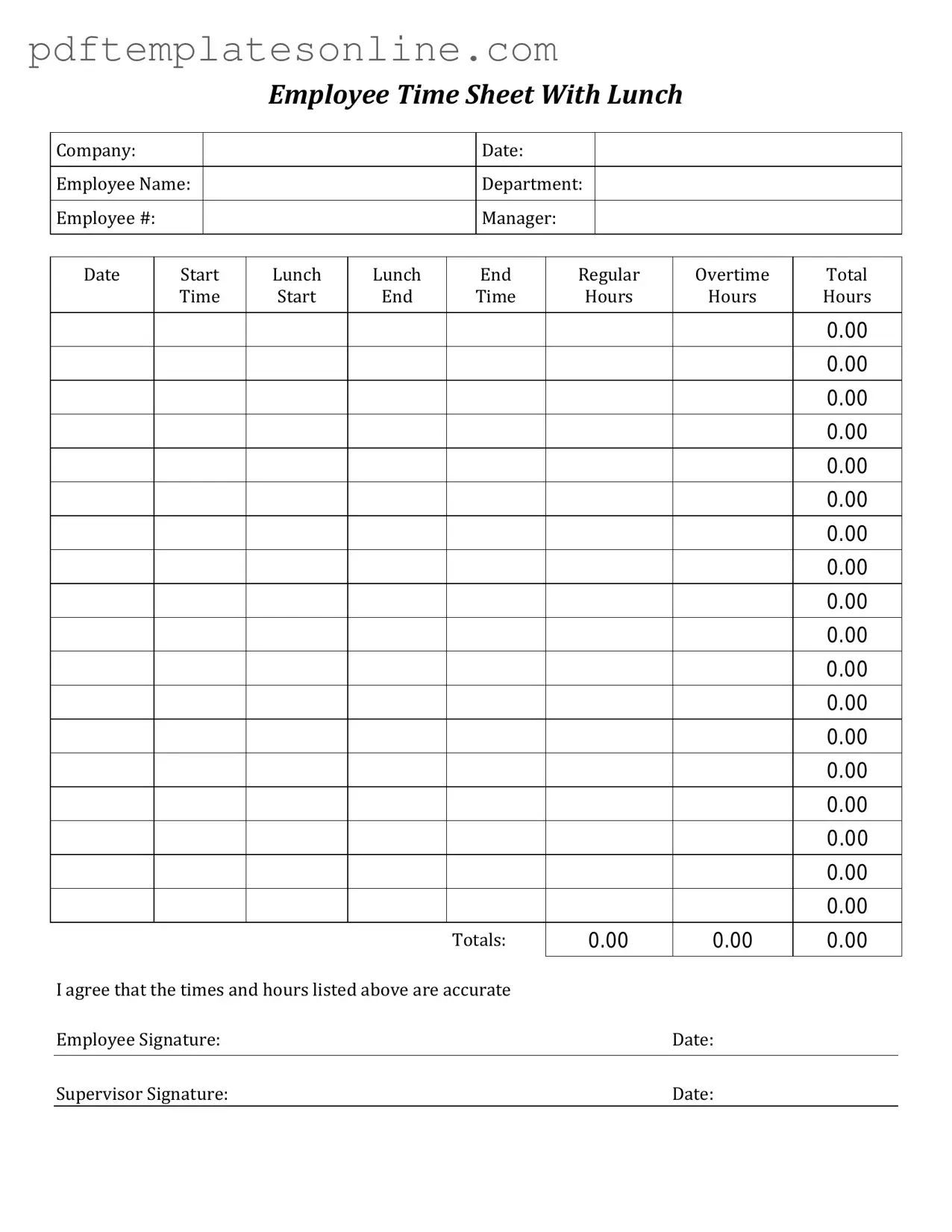Filling out a Time Card form may seem straightforward, but many people make common mistakes that can lead to issues with payroll and record-keeping. One frequent error is failing to record hours accurately. Employees often underestimate or overestimate the time they worked. This can result in incorrect paychecks and frustration for both the employee and the employer.
Another common mistake is neglecting to include breaks. Many workers forget to account for their lunch or rest periods. If these breaks are not documented properly, it can lead to discrepancies in the total hours worked, affecting the accuracy of compensation.
Inconsistent formatting is also a pitfall. Some individuals might write hours in different formats or use abbreviations that are not universally understood. This inconsistency can confuse those processing the time cards and may delay payment. It's important to maintain a standard format throughout the form.
Additionally, some employees forget to submit their Time Card on time. Late submissions can disrupt payroll schedules and create additional work for supervisors. Setting reminders can help ensure that this crucial task is not overlooked.
Another mistake involves omitting required signatures. Many Time Card forms require both the employee’s and supervisor’s signatures to verify the accuracy of the reported hours. Missing signatures can lead to delays in processing and payment.
Lastly, not keeping a personal record of submitted Time Cards can be problematic. Employees should maintain their own copies for reference. If any discrepancies arise, having a personal record can help clarify the situation and provide evidence of hours worked.
